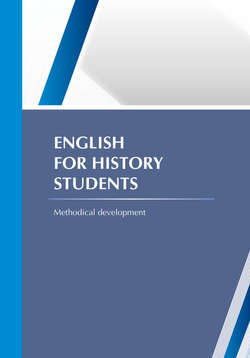Читать книгу English for history students - Karlygash Aisultanova - Страница 8
GOLDEN MAN
Оглавление«Golden man» in Kazakhstan. Tours on unique archeological excavations in Kazakhstan.
In 1969, the Kazakh archeologists under the supervision of К.A. Akishev began excavations of a huge burial mound, located 50 km to the east of Almaty. The archeologists named the burial Issyk since it was never mentioned in any folk legends. And it is no wonder since Issyk had so many neighbouring structures, piercing the sky and forming a grand burial mounds complex – 45 earth pyramids, stretched out at a distance of 3 kilometers. And Issyk, having such impressive neighbours, did not stand out in any way – it rose only 6,5 meters above the ground.
We say «only», as the other burial mounds measured 15 meters in height. As other burials, Issyk was raided back in the ancient times. Fortunately, the raiders neglected a side burial, which was not even the main one, where the remains of a man laid. This man made it into history as the «Golden Man of Issyk». The burial chamber of the mound represents a hollow, where a log construction made of theTien- Shan spruce wood, was put.
There is crockery in the southern and western parts of the room, and the northern part features the remains of a buried man, placed directly on to the strip-and-board flooring of the chamber. As the anthropologists determined, the buried man of Issyk was 17-18 years old. He was wearing richly embroidered golden attire. His head was clad in a high (65-70 cm) headpiece of conic shape, decorated with gold plates of various forms and sizes.
In total, the headpiece had around 150 ornaments on it. The Issyk warrior was wearing a spiral golden neckpiece, the tips of which featured the images of tiger heads at its ends. The deceased warrior was clad in opulent clothes – he belonged to the noble. This apparel was worn on the days of ceremonial functions and parades. His headpiece is high arrow-shaped hat, clasped under his chin, decorated with golden plates.
His left ear lobe is pierced and has a golden earring with granulation and turquoise pendants. He is clad in a short caftan, entirely embroidered with golden pieces. There are two gold rings on his fingers. A large complex of the Sakh animal style art from the Issyk burial mound is an important contribution into the world's culture treasury. The Semirechye is indeed a unique archeological area in the number of royal burial mounds, reaching 18-20 m in height.
Such monumental «Sakh pyramids» could not have been erected over the burial site of a humble member of society. They were meant only for a tight circle of people. A small number of large burial mounds and thousands of small mounds are, undoubtedly, the evidence of society cleavage into two groups the privileged minority and the nonprivileged majority. It is worth mentioning that the foundation for this social inequality was laid in the late Bronze Age, at the end of the second half of the second millennium B.C.
A notable gradation of the mound parameters and the amount of labour, required for their construction, is the proof of social hierarchy in the Sakh society. The complex of findings in the Issyk burial mound gave additional and important materials that throw light on the social structure of the Sakhs of Semirechye. Undoubtedly, the opulence and splendour of the Issyk warrior's golden attire was meant not to only have a visual effect, but had a socia leaning too.
The key function of clothes was to aggrandize the royalty and raise it to the level of a sunlike deity. As per religious beliefs of many tribes, a horse was a symbol of the Sun, the sun deity. The headdress of the Issyk warrior features an image of a horse with goat horns, which, apparently, symbolized the merging of images of the sun deity and tribal totem. The findings in the mounds of the Pazyryk culture in Altai have similar meaning.
There is no doubt that the Issyk horses had a double semantic meaning, being a symbol of the sun deity and a royal sign. On the whole, the prince of Issyk with his bright headpiece and magnificent attire represented the real Ahura Mazda or Mitra – his personality personified the earthly and heavenly lord, the tsar and high priest.The ideological content of the animal style art was a kind of religious substantiation of the Sakh nationhood. The art itself had one goal – to be the state religion.
The importance of the Issyk findings grows, as one more finding was made – a silver bowl with an inscription. The written records of any society indicate that there is a high level of socio-economic organization and genesis of the state. However, the Scythians did not leave behind any written language. There are no traces of written records among thousands and thousands of archeological findings in the Scythian burial mounds.
An assumption was made that the Scythian society had not developed any written language, since their level of development let them do without it. And now, the Sakhs, so unjustly treated by the history, and who for a long time had been at the periphery of the Scythian culture, give us hope that this opinion is not so unshakeable.
Essential Vocabulary
Tasks:
1. Read the text «Golden Man». Write and memorize unknown words and word combinations.
2. Translate the text into Russian.
Answer the following questions:
1. When did the Kazakh archeologists begin excavation of a huge burial mound?
2. Under whose supervision were these excavations carried out?
3. Who was found in the burial Issyk?
4. What was the head of Golden Man clad in?
5. How did archaeologists realize that this young man had belonged to the nobility?
6. Is it true that many tribes believed the horse was a symbol of the sun?
7. What can you say about a silver bowl with an inscription?
